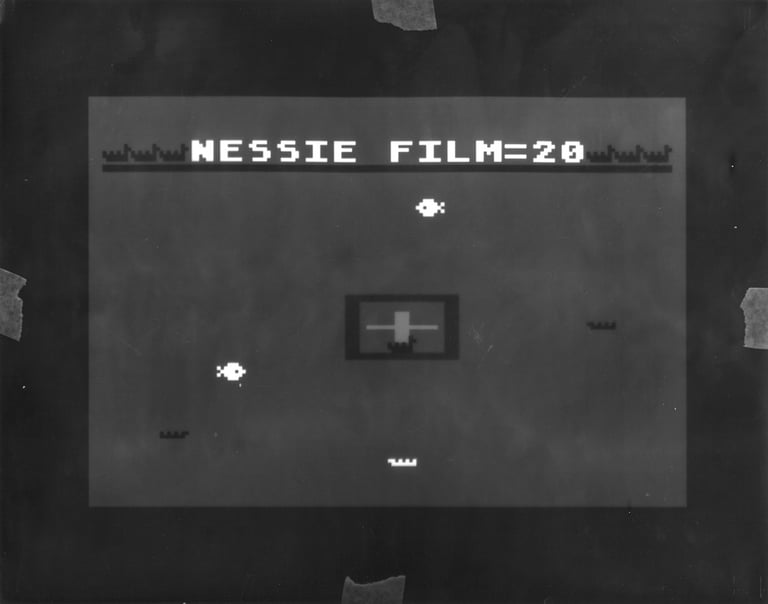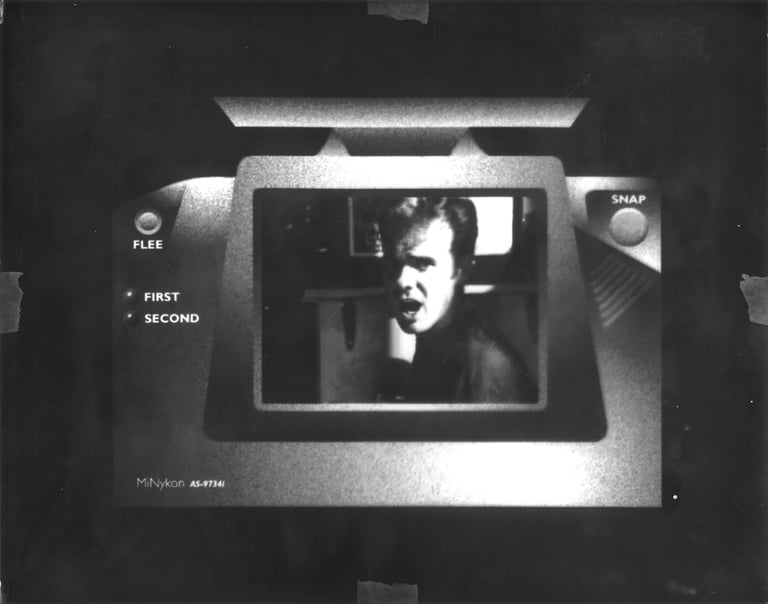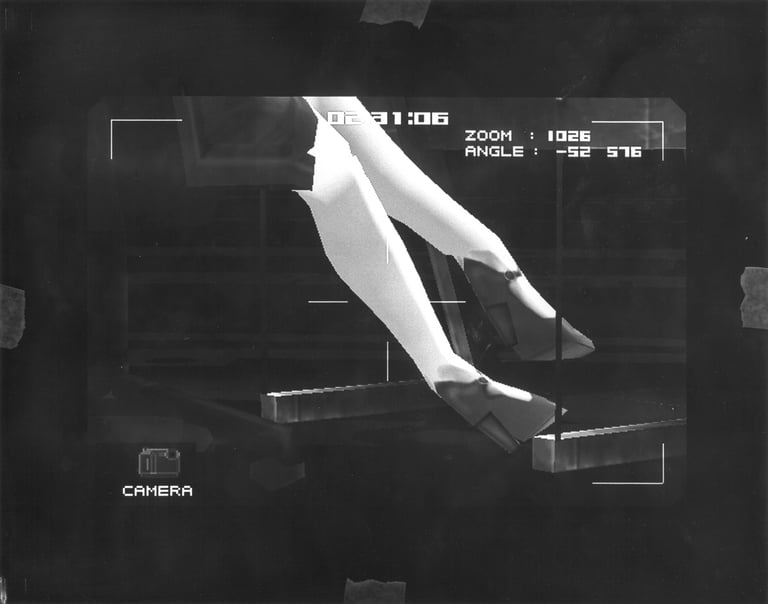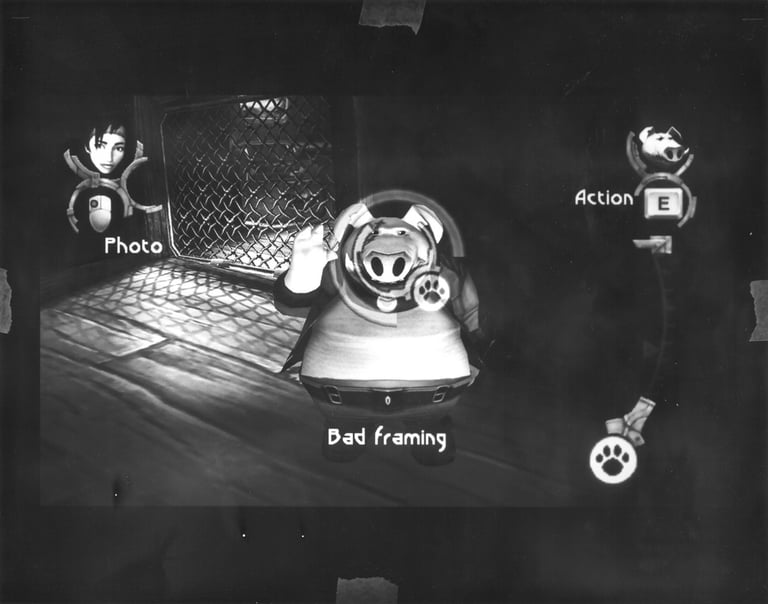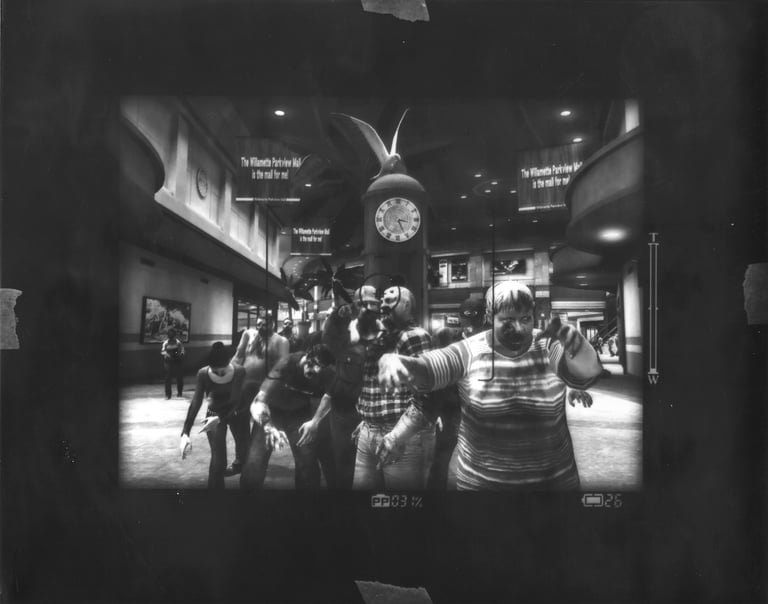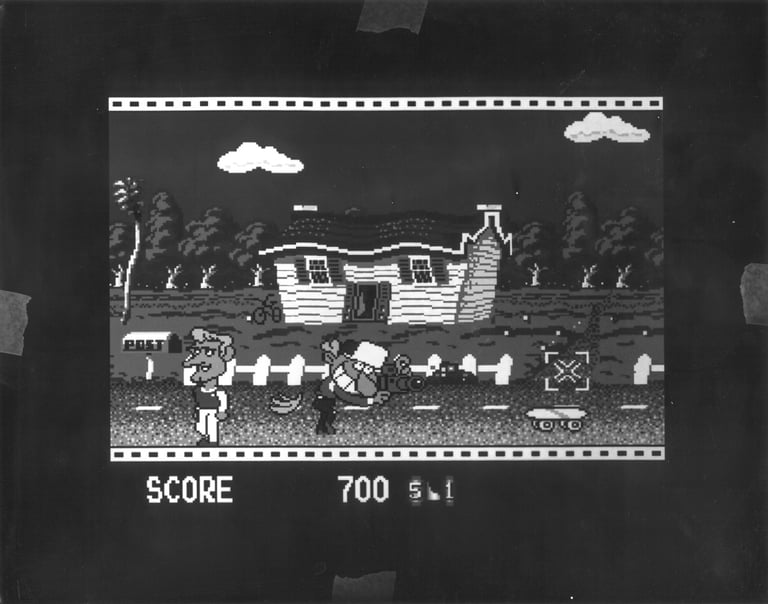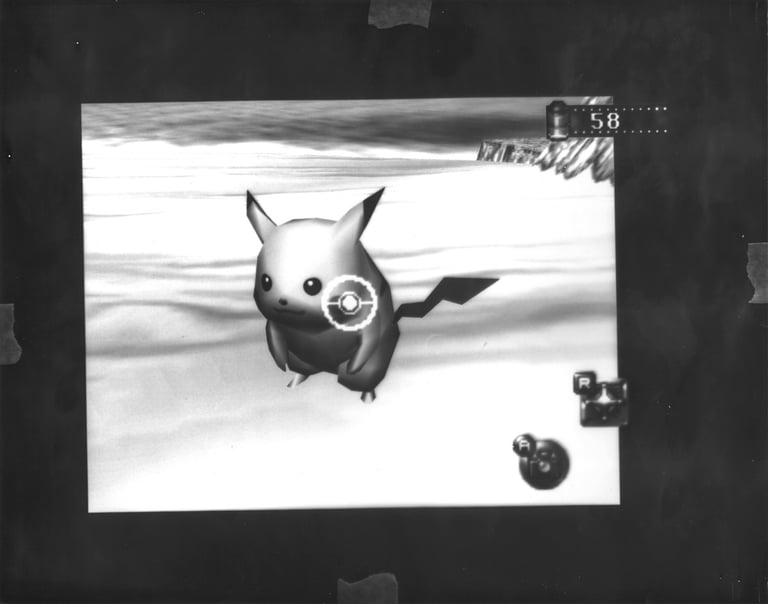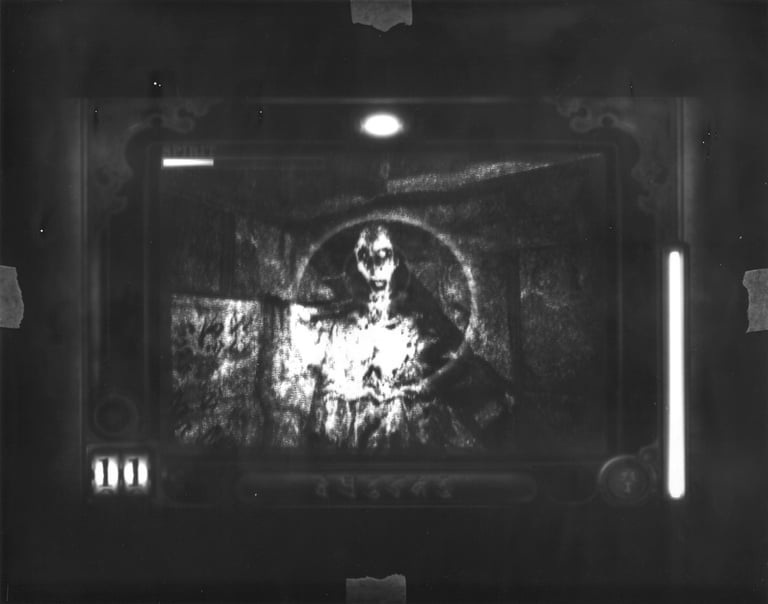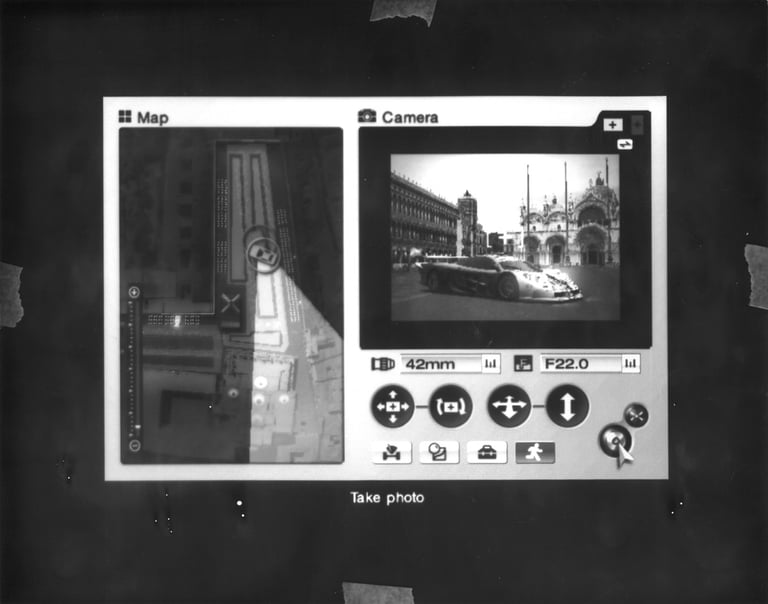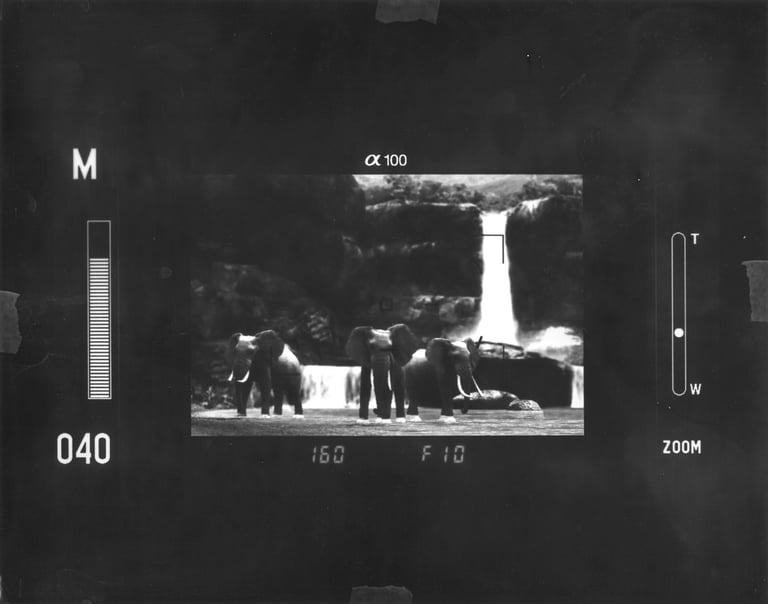Manual 4.60.
2024 – …
#VirtualPhotography #InGamePhotography
#Heliography
20 × 30.5 cm
#Manual 4.60. explores a visual algorithm: here #DigitalPhotography sheds authorship and becomes #VisualInstruction, executing the subtle dicta of the #ImageProtocol. The in-game shot beats to a #SoftwareScript rhythm; the monitor, like a #CameraObscura, focuses the code stream while the #Interface conducts vision, translating the wish to see into #AlgorithmicRules.
The operator records; code shimmers.
The timeline begins in 1979 with Safari, the first digital photo-safari handing out steps and rations beneath a colonial reticle. Next Fatal Frame: camera-shield, exposure-#SpectralAttack, shot-riposte to ghosts. In Gran Turismo 4 a meticulous #Photomode orchestrates #LightAndShadow, turning the track into a #PlayableFlash. Pokémon Snap introduces an algorithm-arbitrator (#ComputerCurator) scoring composition; #DataCuration welds author and machine under #AlgorithmSelection. Red Dead Redemption 2 unfurls free #CinematicPhotography, fixing prairie dust in a #TimeboundFrame; the GTA series speaks through #UrbanPhotography, merges with #SelfieCulture and packs the megalopolis into #DigitalPreservation. And Breath of the Wild unlocks world memory when the shot matches the vista — #MemoryQuest.
Optics of #JosephNicéphoreNiépce — his #ViewFromTheWindow (1826) — rhyme with the monitor: tin plate caught sunlight, the display catches code flow. Here #OperativeImage and media-archaeology intertwine: window — screen, archive — network, mirror — interface. Frame — flare.
Key gesture: relinquish authorship. The artist mirrors the #VernacularView of developer manuals; these utilitarian images — #VernacularPhotography — are recopied pixel-perfect, crystallising into #ArchivalArtifacts where function fuses with aesthetic, subject dissolves in #ProtocolExecution, forging #VisualPreservation.
#LevManovich draws the diagonal #CodeAsImage; #MarkBNHansen vibrates via #Tactility, letting the body feel pixel like film grain; #AlexanderGalloway opens the algorithm, erecting the frame of #VisualRegimes. Against this, a counter-point: #ImageAsCode — in-game photography as executable script. Emotion yields to #DigitalTaxonomy, filing shots into #DigitalRecords; the process becomes #AlgorithmicObedience. The language of #PixelCapture is now command, document, network breath.
Heliography returns solar warmth to code: the ray of 1826 melts the #ColdDigitalImage, leaving a #WarmHelioPrint. The virtual grid turns into a luminous object — from code to grain, from screen to glow.
From window ⤳ to ray ⤳ to image.
From screen ⤳ to bitumen ⤳ to plate.
From instruction ⤳ to algorithm ⤳ to flesh.
#MaximZmeyev
